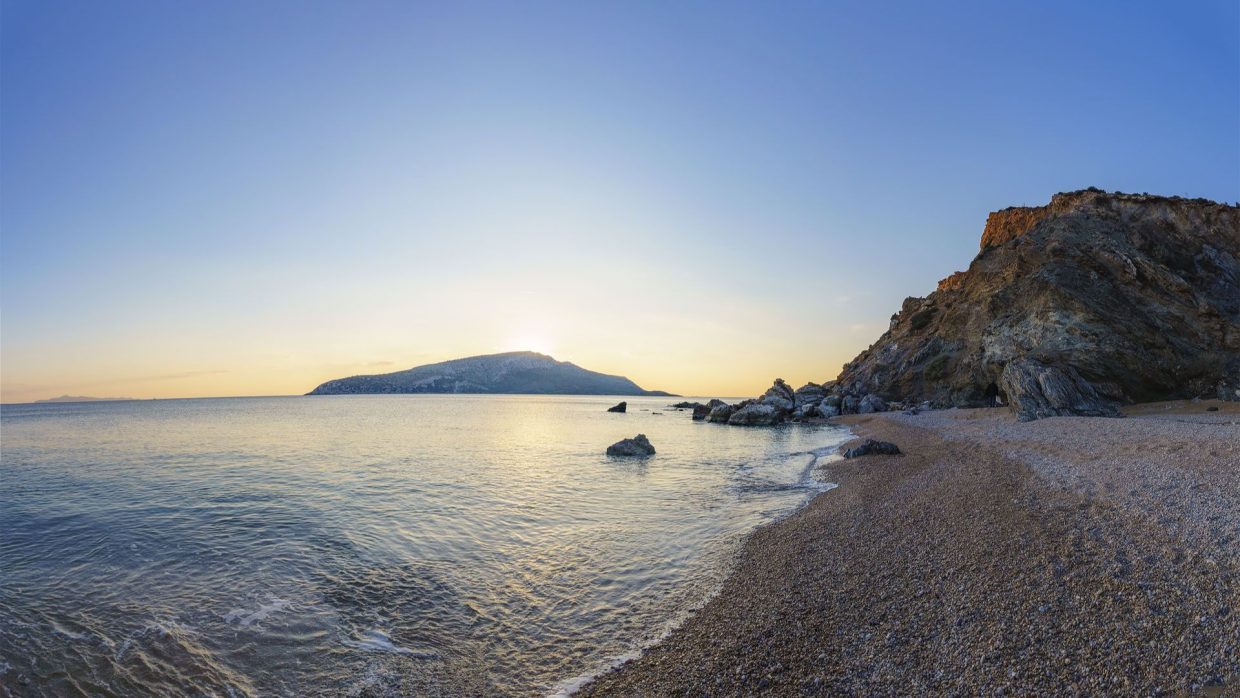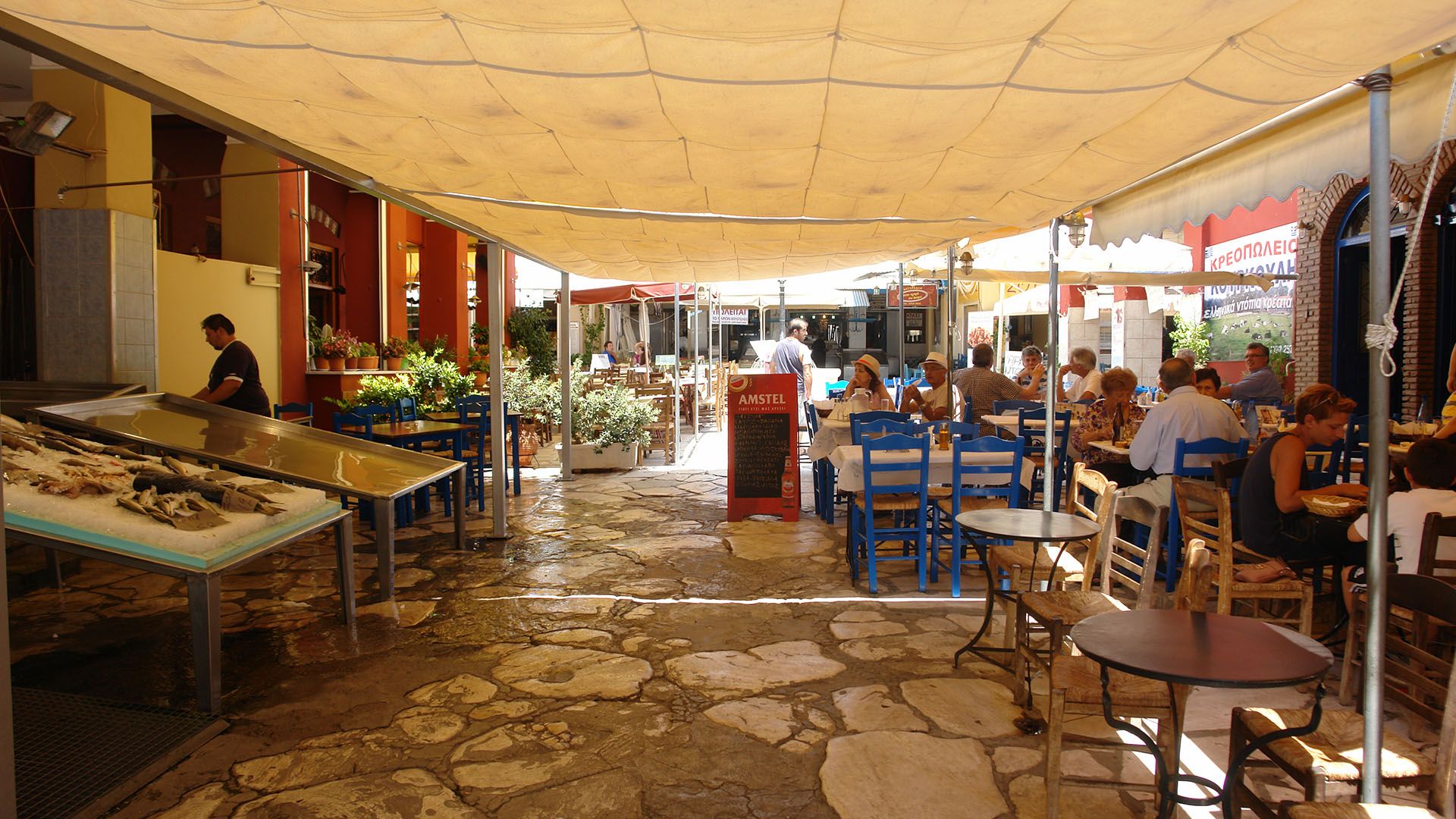Sounion – Patroklos Island and Coastal Marine Zone (GR3000005)
Sounion – Patroklos Island and Coastal Marine Zone (GR3000005)
The area of the protected area amounts to 5374.32 hectares. The inland part of the region has a typical Mediterranean landscape. It consists of three ecosystems, which represent all three types of Mediterranean ecosystems in Greece, i.e. pine forests, macchia (mainland and coastal) and phrygana, in various successive stages. Continental maquis is dominated by Quercus coccifera shrubs or small trees. In the area there are old mines and places of archaeological and paleontological interest. The coastal marsh of Legraina is included in the area.
The Sounio National Park (SNP) was established in 1971. It covers 3500 hectares out of which 750 hectares are part of a strictly protected area. The decision to establish this National Park, which is also protected by the Barcelona Convention, was taken because of the ecological, historical, geological and paleontological importance of the area:
- The Aleppo pine forest that dominates the vegetation of the national park is the most extensive and well-preserved pine forest in the region of eastern Attica. The importance of this forest for the microclimate of the overpopulated area of Athens is obvious. Also, a large number of plant and animal species find niches in this forest.
- The flora of the national park is of great interest. Two species are Greek endemics only found in this specific area. The area includes all three Mediterranean ecosystems of Greece, i.e. the halepi pine forests, the continental maquis (Quercus coccifera formations), the coastal maquis (Juniperus formations) and the phrygana. You can see the different successive stages of each type of ecosystem here.
Due to this variety of ecosystems and successional stages, as well as the fact that the SNP is not far from Athens, it can serve as the ideal site for environmental education purposes. A large number of minerals have been found in the national park area, some of which are completely new to science. It is this variety of minerals and rocks that fueled the development of the unique mining industry during Classical period (480 BC). Evidence of the prosperity of this mining industry during the Antiquity is still visible, as the park is full of remnants of the ancient mines, workshops, houses, shrines and other monuments. The Sounio National Park has many caves and other karst formations. These formations acted as traps during the various geological periods. The result was the discovery of many fossils, especially in the northern part of the national park. Of all the plant fossils found, the most interesting were the Pinus maritima and Quercus suber, which are two species that are now absent from the eastern part of the Mediterranean basin, as well as the Pinus nigra, Buxus sempervirens, which can only be found now to higher elevations.
In addition to the national park, a wider area that includes the Sounio National Park has been declared as an Area of Archaeological and Historical Interest and a Site of Outstanding Natural Beauty. It has been proposed that the protected area should be extended to the south in order to include the area around the temple of Sounio, the sea area between the peninsula of Sounio and Patroklos Island, as well as the island itself. The sea area mentioned above has Posidonia oceanica beds in excellent condition. It is urgent to protect this habitat from the ever-increasing pollution in the Saronic Gulf. The island of Patroklos is included in the proposed areas due to its geographical position (like the National Park of Sounio), it provides refuge for all migratory birds that pass over the Sounio Peninsula. Also, the numerous sea caves along the coast of both the Sounio Peninsula and the Patroklos Island, can be an excellent refuge for the Mediterranean seal. The flora of the area, although not studied yet, may be proved to be interesting.
The present area in general should be protected and at least the current regime should not be altered, as private land claims put all habitats at huge risk.
The species, which are protected under the EU habitats and birds directives are:
Species:
Testudo hermanni and the marginated Tortoise – Testudo marginata
Habitats:
Annual vegetation of drift lines, Tree matorral with Juniperus spp., Calcareous rocky slopes with chasmophytic vegetation, Cisto-Lavenduletalia sclerophyll sand dunes, Embryo shifting dunes, Mediterranean and thermo-Atlantic halophilous shrubs (Sarcocornetea fruticosi), Mediterranean pine forests with endemic Mediterranean pines, Olea forests and Ceratonia, Posidonia beds (Posidonion oceanicae), Pseudo-steppe with grasses and annuals of Thero-Brachypodietea, Reefs, Sands lightly covered by sea water all the time, Phrygana Sarcopoterium spinosum, Southern littoral arcades and thickets (Nerio-Tamaricetea and Securinegion tinctoriae), Steep sea cliffs of the Mediterranean coast with endemic Limonium spp.







